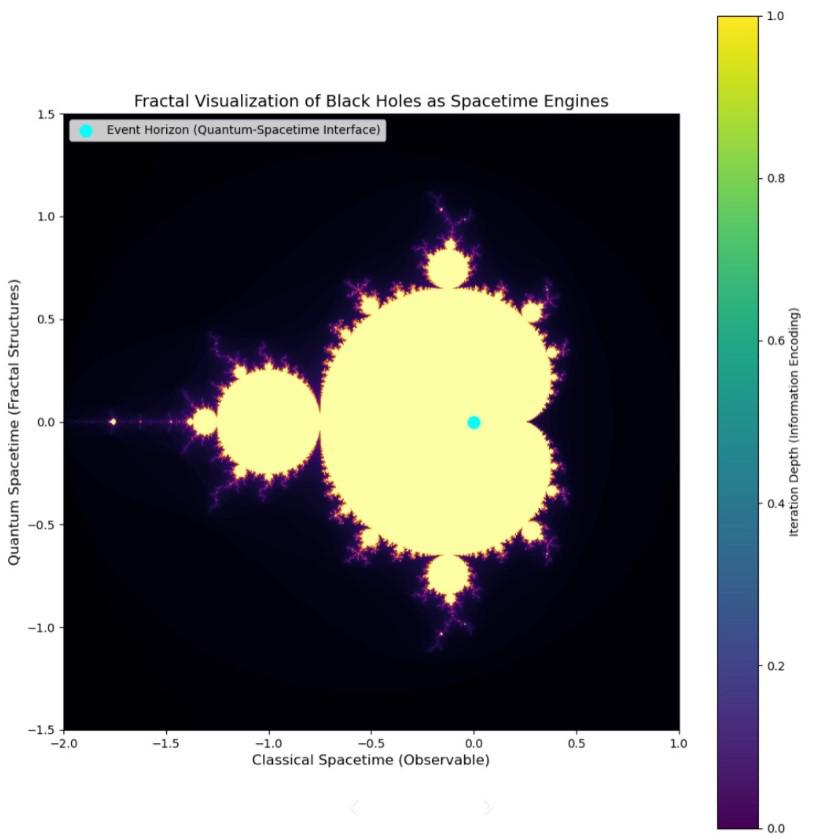

1. Matter as Spacetime and Black Hole Dynamics:
• Matter is not separate from spacetime but is a high-density configuration of spacetime itself, as proposed by Dr. Klooster based out of Singapore.
• When matter approaches the event horizon, it is not “consumed” but transformed into its fundamental spacetime nature, contributing to the growth and restructuring of the black hole’s fractal geometry.
2. Event Horizon as a Quantum-Spacetime Interface:
• The event horizon represents the boundary where matter transitions from classical spacetime (observable, macroscopic) to quantum spacetime (submicroscopic, fractal structures).
• This transition encodes the information of the incoming matter onto the event horizon, preserving it through quantum processes in a holographic form.
3. Black Hole Cores as Fractal Spacetime Generators:
• The core of the black hole is not a singularity but a fractal “node” where spacetime continually reorganizes itself.
• The fractal structure inside the black hole serves as a mechanism to compress and reformat the encoded information into new spacetime structures, which may fuel broader cosmological processes.
4. Spacetime Recycling and Universal Growth:
• The black hole, as a fractal engine, converts matter-energy into spacetime, contributing to the expansion and evolution of the universe.
• This recycling process could feed spacetime into regions beyond our observable universe or even connect to the early moments of the Big Bang, fueling cosmic growth.
5. Quantum Geometric Expansion at the Event Horizon:
• My black hole theory’s event horizon expansion is reinterpreted here as the fractalization of spacetime due to matter conversion.
• The dynamic stabilization of the event horizon is governed by quantum pressures balancing gravitational collapse with the tendency of spacetime to form fractal patterns.
6. Implications for Gravity and Dark Energy:
• Gravity emerges as the tendency of spacetime to move toward higher densities, aligning with Klooster’s view.
• The fractal growth of black holes could drive the apparent expansion of the universe, negating the need for dark energy.
7. Resolution of Conservation Laws:
• Conservation of information and energy is preserved because the encoded data on the event horizon is never lost—it becomes part of the fractal geometry of spacetime.
• This resolves the information paradox by embedding the matter-energy interactions into spacetime itself.

Philosophical Implications:
This unified hypothesis suggests a profoundly interconnected universe where matter, spacetime, and energy are all manifestations of the same fractal framework. Black holes are not ends but dynamic engines of spacetime evolution, ensuring the universe remains a continuous, self-recycling system.